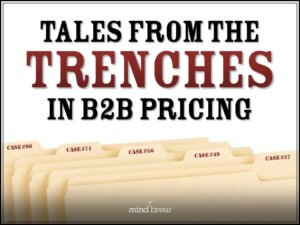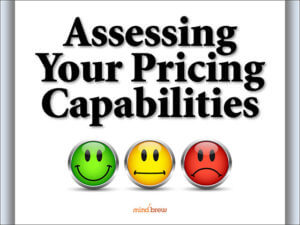In 1984, Gerald Ratner inherited his family’s chain of jewelry stores, which at the time was losing £350,000 (US$459,000) per year. By selling less-expensive costume jewelry that appealed to middle-class customers, he grew the business into a £1.2 billion (US$1.57 billion) enterprise that posted profits of £125 million in 1990. Along the way, the business grew from 120 stores to more than 2,000, while slowly capturing more than half of the jewelry business in the United Kingdom.
But on April 23, 1991 it came to a sudden and dramatic end. And it was all Gerald’s fault.
Ratner was asked to give a speech at a very prestigious convention. In an ill-fated effort to make his audience laugh, he told a couple of jokes at his own expense.
“People say, ‘How can you sell this for such a low price?’ I say, ‘because it’s total crap.'”
Later in the same speech, he added, “We even sell a pair of [gold] earrings for under £1. Some people say, ‘That’s cheaper than a prawn sandwich!’… I have to say, the sandwich will probably last longer than the earrings.”
The next day, newspapers across the country carried the story of the CEO’s gaff. The stock tanked. By the end of the year, the company had lost 80% of its value. By the end of the next year, Ratner had lost his job and his entire fortune. Today, Ratner is himself something of a joke. Whenever someone says something stupid that undermines their business, Brits refer to it as “doing a Ratner.”
The interesting thing is that Ratner didn’t say anything untrue. If you are buying gold earrings for £1, of course they’re crap. Everyone already knew that.
But saying it out loud turned off customers and investors.
In the B2B pricing profession, we face a similar conundrum. Your customers (and investors, if you have them) know that you have a process for setting prices. They also know that your company is in business to make money, and that you’re trying to sell your products and services for as much money as possible.
But you can’t say any of that out loud.
We all know that if we divulged our processes for setting prices, we would likely be “doing a Ratner.” Our business could dry up overnight, and we might even go bankrupt.
Unfortunately, this necessary secrecy also means that pricing professionals don’t have a lot of opportunity to share insights into what works and what doesn’t. Other disciplines, like sales, marketing, even supply chain management, can share best practices without fear. Not so for pricing.
That’s one of the problems we work on solving here at PricingBrew. Our research is focused on lifting the veil of secrecy so teams can discover best practices that work — and avoid the ones that don’t work so well.
If you’d like to learn from some of the best B2B pricing teams around, check out these resources:
- Tales from the Trenches in B2B Pricing
- The Top “Lessons Learned” by Pricing Leaders
- Assessing Your Pricing Capabilities
Ratner’s story didn’t end in 1991. He built and sold a successful multi-million dollar health club business and later founded an online jewelry business. And his former company rebounded as well. After a rebranding effort, it grew to become the world’s largest diamond retailer.
But Ratner’s name will forever live on as a cautionary tale. Hopefully, we can all learn something from his experience.
















